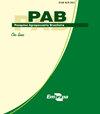Temporal dynamics of Plasmopara viticola as function of bud load increase in 'Sauvignon Blanc'
IF 0.7
4区 农林科学
Q3 AGRICULTURE, MULTIDISCIPLINARY
引用次数: 0
Abstract
Abstract The objective of this work was to evaluate the effect of increasing bud load per plant on epidemiological variables of downy mildew on 'Sauvignon Blanc'. The study was carried out in a commercial vineyard in a high-altitude region of the municipality of São Joaquim, in the state of Santa Catarina, Brazil, during the 2016/2017 and 2017/2018 vintages. The treatments consisted of four bud loads: 15, 30, 50, and 75 per vine. The maximum incidence, maximum severity, beginning of symptom appearance, time to reach maximum disease incidence and severity, area under the incidence and severity disease progress curve were determined. Increasing bud load over 50 per vine results in higher incidence and severity of downy mildew (Plasmopara viticola) in 'Sauvignon Blanc' leaves but does not influence the time to reach maximum disease incidence and severity. Increasing bud load over 50 per vine results in an increase in the area under the disease incidence and severity progress curve for downy mildew in 'Sauvignon Blanc' leaves. To adopt over 50 buds per vine treatment, it is necessary additional disease control measures, with an emphasis on integrated management to control downy mildew.白苏维浓(Sauvignon Blanc)芽量增加对葡萄浆原菌时间动态的影响
摘要本研究旨在评价增加单株芽量对长相思霜霉病流行病学变量的影响。该研究于2016/2017和2017/2018年份在巴西圣卡塔琳娜州s o Joaquim市高海拔地区的一个商业葡萄园进行。处理包括4个芽负荷:每株15、30、50和75个。测定最大发病率、最大严重程度、症状开始出现、达到最大发病率和严重程度的时间、发病率和严重程度疾病进展曲线下的面积。每棵葡萄增加50个以上的芽负荷会导致白苏维翁叶片霜霉病的发病率和严重程度增加,但不影响达到最高发病率和严重程度的时间。当每株葡萄增加50个以上的芽量时,长相思白霜霉病发病和严重程度进展曲线下的面积就会增加。采用每株50芽以上的处理,需要额外的疾病控制措施,重点是综合管理,以控制霜霉病。
本文章由计算机程序翻译,如有差异,请以英文原文为准。
求助全文
约1分钟内获得全文
求助全文
来源期刊

Pesquisa Agropecuaria Brasileira
农林科学-农业综合
CiteScore
1.20
自引率
0.00%
发文量
45
审稿时长
9-18 weeks
期刊介绍:
Pesquisa Agropecuária Brasileira – PAB – is issued monthly by Empresa Brasileira de Pesquisa Agropecuária – EMBRAPA, affiliated to Ministry of Agriculture, Livestock and Food Supply. PAB publishes original scientific-technological articles on Plant Physiology, Plant Pathology, Crop Science, Genetics, Soil Science, Food Technology and Animal Science.
Its abbreviated title is Pesq. agropec. bras., and it should be used in bibliographies, footnotes, references and bibliographic strips.
 求助内容:
求助内容: 应助结果提醒方式:
应助结果提醒方式:


